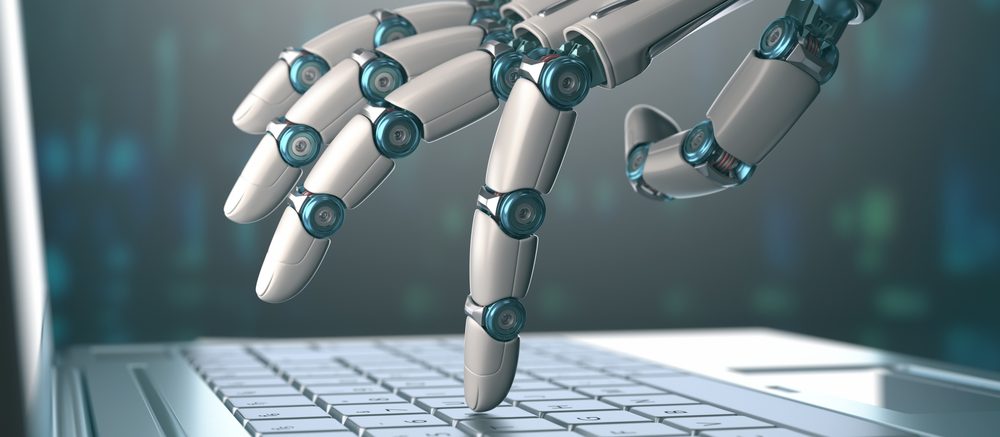The Age of Exponential Innovation & Industry 4.0

The Age of Exponential Innovation & Industry 4.0
Just a few weeks ago, I sat in a presentation by futurist Todd McLees of the Pendio Group on Industry 4.0 at the Walworth County Economic Development Alliance (WCEDA) annual meeting. Those of you who have heard Todd speak won’t be surprised to hear that he was quite compelling. His main premise is that we find ourselves in an unparalleled age of exponential innovation. As a result, our businesses are presented with the choice to adapt and grow or do nothing and quickly become irrelevant.
This age and the ability to adapt and grow is often referred to with terms like Industry 4.0 or the 4th Industrial Revolution. Though the title has a manufacturing focus, it is applicable and has deep impact on every part of business. As with most changes, there is both a human and a machine component.
On the human side, there are conditions in our world that are making it a perfect time for innovation. Statistics show that 10 million people will be exiting the workforce in the next 5 years. So, if you are having problems finding people, here is the good news, it gets worse!
For those who are currently in the workforce or joining it, the required skillsets are changing. Innovation is requiring that people change skills and learn. It only takes one look at the Amazon shipping and fulfillment process to understand that the process of picking and packing has changed. Talk to any manufacturer who has begun to use robots, and you will hear that they are finding it necessary to reskill their people to manage and work with the robots. Almost every job is being rapidly impacted by innovation.
There are several technologies that contribute to Industry 4.0, some with greater impact than others. Most of us have heard of these technologies, but I’m quite sure we don’t always recognize the impact they are bringing and will continue to bring over the next years. Here is my quick summary of the technology behind Industry 4.0:
1. (AI) Artificial Intelligence – AI is driving many of the advancements in Industry 4.0. True “smarts” have always been human, but software-based intelligence that allows machines to learn human-like logic is a real thing. Some of the ideas we have previously only contemplated in movies and literature are a reality now. Software controlled machinery analyzes vast quantities of sensor collected data and learns from it. Because of advancements in the speed and power of computer processors, this data can be analyzed and adapted to very quickly. The simplest example of this is the rise of self-driving cars. AI however is behind all sorts of innovation from smart manufacturing robots to consumer goods.
2. (IoT) Internet of Things or (IIot) Industrial Internet of Things – This technology is all about little sensors everywhere. Have you gone refrigerator shopping lately? Many of the models will tell you all about what food is in the fridge, what the temperature things are, and even let you browse the inside of your fridge from your cell phone. Sensors are being planted in everything, and they provide the data to adapt and react immediately, but also longer-term analytics as many devices send data back to the manufacturer for analysis.
3. (3D Printing) Additive Manufacturing – We have all seen the cool plastic models a 3D printer can produce and may even have a high school student who is using 3D printing in class. 3D Printing or additive manufacturing is having a deep impact on manufacturing. as it produces prototypes, parts, and more in a very short timeframe.
4. (VR) Virtual Reality – Virtual Reality and its children, Augmented Reality and Mixed Reality, impact more than the gaming market. At the recent Wisconsin Manufacturing & Technology Show, one vendor allowed attendees to test their skills on their forklift training simulation. This virtual reality training device had full VR glasses and seemed to the operator much like the real thing. VR is allowing us to learn, adapt, test, and model things in a much shorter timeframe with far less expense than before.
5. (5G) Advanced Cellular Internet – Faster Internet does not seem like that big of a deal. We get some faster cellular offering about every 3-4 years. 5G is different for several reasons, but the lowdown is that it is faster (10-100x), handles more volume (1000x), hesitates less (5x better), and the goal at least is better coverage (100% – I’ll believe it when I see it!). 451research.com calls it, “The next and most radical generation of mobile communications”. This technology is expected to allow an even more dynamic expansion of AI and IoT.
6. (RPA) Robotic Process Automation – Robotic Process Automation is a software robot for the process worker. It learns how a worker does a repetitive task and does it for them. Consider the process of setting up a new prospect in your system. Maybe you enter it in CRM, send an email of thanks to them, schedule an appointment in your calendar, and email an administrative assistant to send them a gift box. RPA can learn to do this and many other manual, mundane, and repetitive processes for you.
7. Advanced Data Analytics – We have been hearing about data analytics or big data for years now, but it plays a huge role here with the convergence of technologies. The IoT sensors are collecting massive amounts of data that can provide significant information for innovating. Some reports say that self-driving vehicles generate 4TB of data a day. Auto manufacturers are collecting that data and analyzing it and using it with AI to produce better driving results. Advanced data analytics will continue to be a huge part of driving new innovation.
There is an interesting era ahead of us. Industry 4.0 will bring massive changes and unprecedented innovation. We probably won’t know exactly what this age looks like for sure until 30 years from now, when we are looking back. What is certain is that innovation is coming our way at a faster pace, than we have seen in our lifetime.
The key to staying relevant, according to McLees, is to adopt new technology more rapidly. To succeed and grow in the next years, we need to develop a culture of speed. We must prepare our businesses to adapt and change and create a culture of learning and innovation, so that we lead rather than get left behind. How are you preparing for and adapting to the rapid pace of innovation that is driving Industry 4.0?

Scott Hirschfeld is the President of CTaccess, a Brookfield IT support company that has been helping businesses stop focusing on IT and getting back to doing business since 1990. Under his leadership CTaccess provides the business minded approach of larger IT companies with the personalized touch of the smaller ones. Connect with Scott on LinkedIn.
